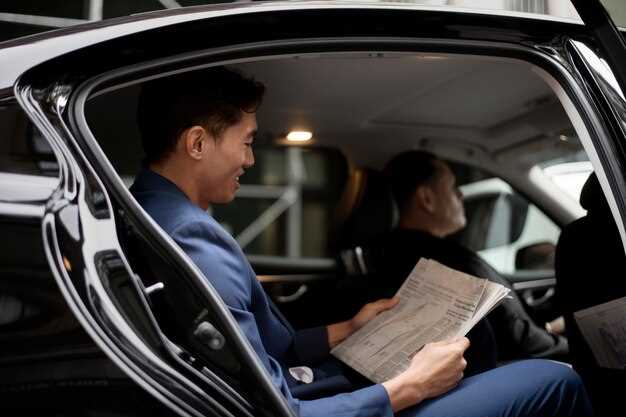
The automotive landscape is rapidly evolving, with Chinese vehicles emerging as significant players in the global market. As these cars gain popularity, it’s crucial to address the fundamental concern of safety. Understanding how these vehicles perform in crash scenarios is essential for consumers and manufacturers alike. This article delves into the evaluation of Chinese car safety through rigorous analysis of crash data, aiming to provide insights into their structural integrity and overall performance during accidents.
In recent years, numerous reports have surfaced regarding the safety standards of Chinese vehicles, raising questions about their quality and reliability compared to international counterparts. By analyzing comprehensive crash data, we can discern patterns and draw conclusions about the safety of these automobiles. This analysis is not only essential for potential buyers but also serves as a critical feedback mechanism for manufacturers striving to improve their products and align with global safety benchmarks.
As the demand for Chinese vehicles continues to grow, assessing their safety becomes a priority. This article will explore various crash tests and safety ratings, offering a detailed perspective on how these vehicles hold up in real-world conditions. With an emphasis on data-driven evaluation, we aim to provide a clear understanding of what consumers can expect when it comes to the safety of Chinese cars.
Analyzing Crash Test Results of Popular Chinese Car Models
The safety of vehicles is a paramount concern for consumers, and crash test results play a critical role in assessing the reliability of cars. In recent years, several Chinese car manufacturers have gained prominence in the global market, prompting an in-depth examination of their safety performance through various crash tests.
Prominent models such as the Geely Atlas, Changan CS75, and BYD Tang have been subjected to rigorous testing both locally and by international organizations. These tests evaluate crucial parameters, such as frontal and side impact protection, pedestrian safety, and overall vehicle stability during crashes.
The results from these tests have shown a notable improvement in the safety ratings of many Chinese vehicles over the past decade. For instance, the Geely Atlas has received commendations for its robust build quality, demonstrating effective energy absorption during a frontal collision. The vehicle’s advanced airbag system also contributes positively to its crash performance.
Moreover, the Changan CS75 has achieved significant scores in side-impact tests, indicating effective protection for occupants in scenarios involving collisions with other vehicles or obstacles. This model features reinforced side structures that enhance its resilience in crashes, a crucial aspect of safety that consumers prioritize.
However, it is essential to consider the variability in testing standards across different regions. While Chinese vehicles may perform well in domestic tests, differences in testing protocols could lead to disparity in international assessments. Consequently, potential buyers should scrutinize independent crash test results from reputable organizations such as Euro NCAP or the Insurance Institute for Highway Safety (IIHS) for a comprehensive view of Chinese car safety.
In conclusion, the analysis of crash test results reveals a positive trajectory in the safety performance of popular Chinese car models. Continued investment in research and development is crucial for these manufacturers to maintain and enhance their competitive edge in the ever-evolving automotive landscape. As consumers prioritize safety, it becomes imperative for manufacturers to ensure their vehicles meet and exceed established standards.
Comparing Chinese Vehicle Safety Ratings with Global Standards

The evaluation of safety ratings for vehicles is a critical aspect of the automotive industry, influencing consumer choices and regulatory practices. In the context of Chinese vehicles, assessing safety ratings against global standards provides insight into their competitive positioning. The primary organizations responsible for vehicle safety assessments globally include the Euro NCAP, the NHTSA in the United States, and the IIHS, each employing rigorous testing methodologies to evaluate crashworthiness and overall vehicle performance in accident scenarios.
Chinese vehicle manufacturers have increasingly focused on enhancing safety features to meet both domestic and international standards. Tests conducted by these organizations often include front and side crash tests, pedestrian protection assessments, and evaluations of electronic safety aids. However, the standards and protocols differ from those in China, where the C-NCAP is the main body. While C-NCAP has made significant strides in improving testing procedures and safety evaluation criteria, there remains a discrepancy when compared to the more established global organizations.
Recent data indicates that many Chinese vehicles have begun to perform well in international safety assessments, reflecting advancements in engineering and technology. Several Chinese brands have achieved commendable ratings in Euro NCAP and other global platforms, highlighting their commitment to safety. Yet, challenges remain, particularly in areas such as child occupant protection and advanced driver-assistance systems (ADAS).
To enhance their global competitiveness, Chinese manufacturers need to harmonize their safety standards with international best practices. This harmonization process includes investing in research and development, adopting advanced materials, and integrating sophisticated safety technologies. As the global automotive landscape evolves, the Chinese automotive sector’s ability to align with global safety standards will be pivotal in ensuring both the safety of consumers and the manufacturer’s market success.
Identifying Common Safety Features in Chinese Automobile Design

As the automotive industry evolves, Chinese vehicles have increasingly focused on integrating advanced safety technologies to meet global standards. These features are designed to enhance occupant protection and mitigate the risk of accidents.
One of the most prevalent safety features in Chinese automobile design is the incorporation of multiple airbags. Front, side, and curtain airbags are standard in many models, providing comprehensive coverage during collisions. The installation of these airbags reflects the manufacturers’ commitment to improving passenger safety.
Another common aspect is the utilization of advanced driver assistance systems (ADAS)Chinese vehicles come equipped with technologies such as collision warning, lane departure warning, and adaptive cruise control. These systems help to prevent accidents by alerting drivers to potential hazards and assisting with vehicle control.
Structural integrity is also a priority in Chinese vehicle safety design. Manufacturers often employ high-strength steel and reinforced frames to enhance crash resistance and occupant protection. Safety ratings from organizations such as the China New Car Assessment Program (C-NCAP) provide valuable feedback and encourage continuous improvement in structural safety.
Additionally, many Chinese automobiles are being equipped with electronic stability control (ESC) systems. This technology aids drivers in maintaining control during adverse conditions, significantly reducing the likelihood of rollovers and skidding accidents.
Prevention of pedestrian injuries is increasingly addressed through designs that consider accident scenarios. Features like active hoods, which automatically lift upon impact, are becoming more common, showcasing a progressive approach to safety in Chinese automobile design.
Overall, the emphasis on integrating a variety of safety features illustrates the commitment of Chinese automotive manufacturers to enhance vehicle safety. By adopting global best practices and continuously innovating, Chinese vehicles are positioning themselves not only for domestic markets but also for international consumers seeking safe driving options.


